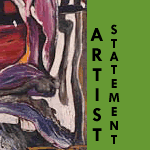

News From the Artist: (Nov-Dec 2006 Issue)
FAQs - Frequently Asked Art Questions
Artists never fail to fascinate other mere mortals. However, few realize
that artists can be born but not necessarily made! All it takes is technique,
which can be taught. Then a thinking brain completes the art product.
A brilliant artist once remarked: So-and-so is so skilled at painting
and drawing; he needs to have his hands cut off so he can USE his brain.
Q: My landscapes seem to lack perspective. What
is the secret?
A. As the view recedes, the horizon becomes lighter. . One guide is observing the view from the car windshield as you drive out on the highway. Note the distant haze as compared to the stark foreground.
Q: Still on landscapes, how is scaling done?
A: From a photograph, one effective scale is achieved by drawing horizontal
and vertical lines.as guide. Then shapes of detailed objects can be
molded along these plumb lines.
If painting on site, the old way of scaling using a brush to measure
details and distance can work. The landscape may be simplified or trimmed.
Removing some objects from the scenery .will result in a better composition,
free of clutter.
Q: How can light be worked in a painting ?
A: Note light source. When copying from photos,
note where shadows appear, determined by direction of the light. I often
remind students not to be afraid of the dark in order to get the light.
Lights and darks are basic ingredients for a successful painting.
Painting on site must be done at the same time of day, or adjusted for
light source, if the painting will take several days to do.
Taking a picture on site, can help if painting is to be finished indoors.
Have an Art Question? E-mail the artist. (The artist reserves the right to publish all Qs received)